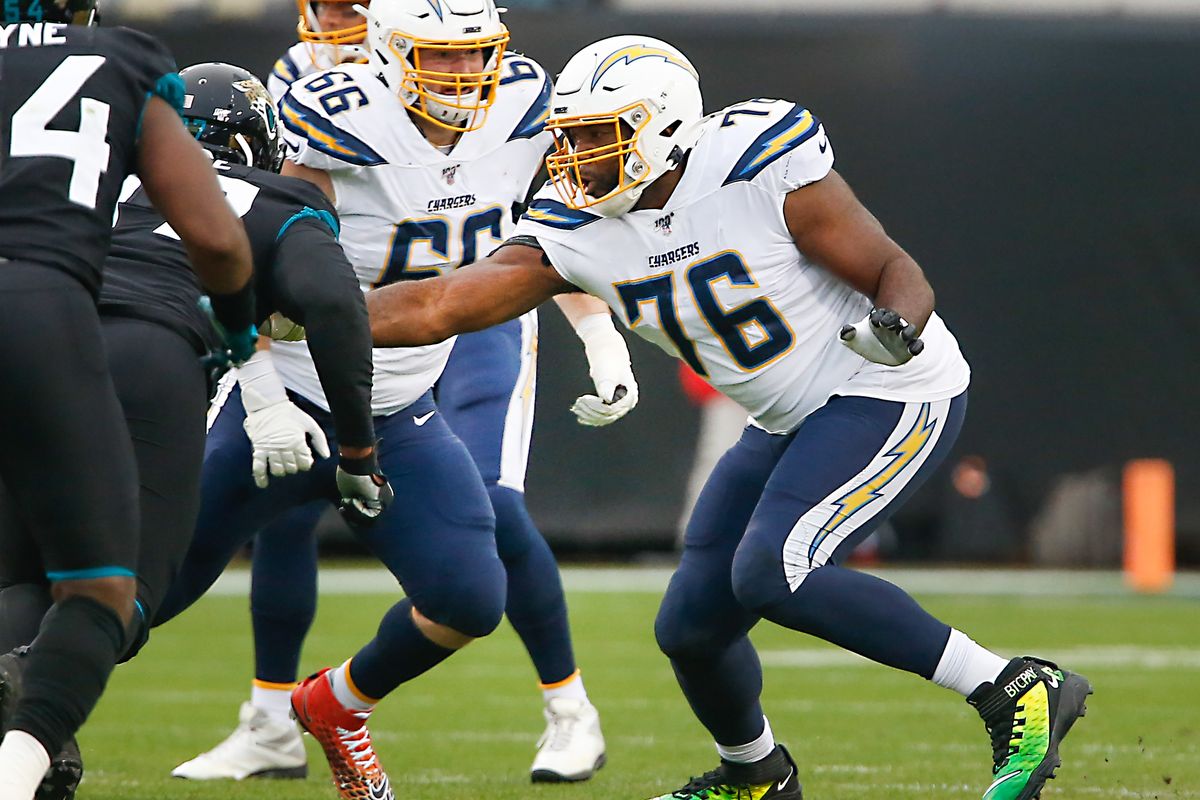The Panthers made the second of what is likely to be a number of significant offseason moves this past week when they reportedly agreed to trade Trai Turner to the Chargers in return for veteran left tackle Russell Okung. The trade won’t be formally completed until the start of the next league year in a couple of weeks, and the dust likely won’t begin to settle until the season actually rolls around, but in an attempt to understand this trade, it’s worth taking a look at exactly what Russell Okung has to offer the Panthers – and why the Chargers might have been willing to move on from him.
So then, without further ado, how good is Russell Okung?
Run Blocking
It is worth noting at this point that Okung did struggle with a lower body issue last season after he missed most of the first half of the season with a blood clot, and that even when he was on the field last season there is a chance that he wasn’t playing at peak health after missing a lot of workouts due to the larger issue that kept him off the roster to begin the season. However, with that said, his run blocking does raise some concerns. For a start, he didn’t play with great pad level, making it hard for him to generate any consistent movement (Okung is at left tackle, wearing #76):
Now, this is something that could have been affected by his injury as playing with good pad level does put a lot of strain on the lower body, but not only did it make it hard for him to generate much push, but that in order to counter this, he showed a tendency to lean with his upper body to generate more of it:
And this, in turn, does lead to some balance concerns, as this puts his weight well out in front of his feet, making it very hard for him to adjust to changes in direction by the defender:
If the Panthers are going to run a downhill power scheme, Okung is likely gong to struggle – but where he does have more success is when blocking directionally, which may be the future of the offensive line in Carolina. He shows good foot speed and body control and uses it well to wall off rushing lanes from defenders as part of a wider scheme:
And shows an understanding of how to use his footwork to good effect, taking forward inside steps to direct edge rushers away from inside rushing lanes:
The other side of run blocking of this type, and in general, is hand usage – and Okung does show some nice things in this regard, getting reasonably consistently inside hand placement:
Which actually shows up most consistently when he was asked to reach block:
But there are also some concerns in this regard as well – he can occasionally be slow to get his hands up, which makes it easier for defenders to get into his frame:
The more consistently frustrating part of his hand usage, is that he doesn’t extend his arms enough a lot of the time, which means defenders are closer in and so improve their rotational leverage, making it harder for him to deal with their attempts to twist around him:
Okung is far from a disaster as a run blocker, and in a scheme that asks him to control blockers more than move them, he can be an effective piece – but he could do with improving his pad level and needs to tighten up his hand usage at times, at least from the games in 2019 that went into this tape study. On the plus side, he moves well in space and if the Panthers are going to ask him to work to the second level or pull a lot, he shows the requisite athleticism to do this to a high level:
Though he could stand to get his feet set more consistently before looking to engage:
However, while Okung is a little hit and miss as a run blocker, the big appeal with him – and most players looking to play left tackle – is pass protection. So how does Okung get on in this regard?
Up Next: Okung As A Pass Blocker



